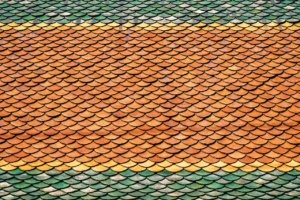Making and Using Adhesive Roof Underlayment Products

Let’s identify some of the key features of adhesive underlayment and explore how people use it. Then, we’ll discuss how contract manufacturing services can help your business create high quality adhesive roof underlayment products.
The Layers of a Roof
Generally, three layers of material make up most roofs:
- OSB or plywood makes up the roof deck, or roof sheathing. It’s nailed directly onto the rafters and is thus the lowest layer of the roof.
- The underlayment is the middle layer that’s attached to the roof deck as a weather barrier. Often, felt, rubberized asphalt, or various synthetic materials make up this layer.
- The shingles are the top layer and the layer that most people are familiar with. Ultimately, many different materials, including asphalt, slate, and metal make shingles.
Understanding Underlayment
Underlayment is one of the most important parts of giving a roof long term weather resistance. Tough weather conditions, like hail and wind driven rain, can damage or dislodge shingles. Furthermore, water can seep in through the cracks even without shingle damage.
That’s where underlayment comes in. Its weatherproof design allows it to block out moisture and prevent the moisture from penetrating the roof any further. This function is key for preserving the long term integrity of the roof and protecting the home.
Different materials have their own advantages and disadvantages in how they perform this task. Traditionally, bitumen-soaked felt known as tar paper was the standard option. However, new choices like synthetic underlayment and rubberized asphalt have become popular.
The Advantages of Adhesive Roof Underlayment
Adhesive roof underlayment is a roofing product that’s become popular for its durability and ease of application. Previously, roofers had to apply underlayment to roof decks using time consuming methods like cap nails and roofing staples.
With adhesive roof underlayment, the process is much simpler. Self adhered underlayment has an adhesive-coated underside that’s protected by a plastic film. Roofers remove the film and apply the underlayment directly to the roof deck. The self-stick water resistant adhesive locks the underlayment firmly in place without nails or staples.
Adhesive underlayment is faster and easier to apply, and it requires fewer additional materials than traditional underlayment. Roofers can use it to effectively seal seams without any trouble. And it’s a great match for the advanced synthetic materials that many roofers use today.
Manufacturing Adhesive Underlayment
With the increase in demand for adhesive underlayment products, many manufacturers have decided to enter the adhesive underlayment market. However, adhesive underlayment requires some specialized manufacturing processes to create.
Specifically, manufacturing these roofing products requires the manufacturer to have access to adhesive coating and laminating capabilities. Typically, you attach underlayment material to a base mat, then coat it with an adhesive. Then, you need to laminate these layers together with the protective plastic film.
Furthermore, manufacturing adhesive underlayment also requires wide-format laminating, die cutting, and slitting equipment. To secure these manufacturing capabilities, it’s common for businesses to use the services of contract manufacturers.
CTI: Your Conversion Manufacturing Solution
Conversion Technologies International is a leading contract adhesive manufacturer. Our capabilities include an extensive range of lamination, adhesive coating and die cutting services. That makes us an ideal fit for many adhesive roof underlayment manufacturing projects.
We’ve spent years working with the biggest names in manufacturing and building products. CTI has even created custom manufacturing solutions for peel and stick underlayment. The key advantages are our fully modular manufacturing facilities and R&D capabilities. We take pride in giving our clients every tool they need to create excellent building materials.
The Benefits of Using a Contract Manufacturer
Finally, let’s explore the necessity of finding the right company for your manufacturing needs. After all, no matter the size of your business, you reach a point where you simply can’t do it all yourself. You need equipment, expertise and space. Often, the cost and time involved are overwhelming.
Similarly, it’s not always about saving money. Outsourcing saves you stress. Running a company is challenging enough, even in the best of times. Finding a supplier that eases the logistics in getting the final product to your clients is critical. Not only is our team here to help, we’re here to give you peace of mind. We act as an extension of your facility and perform as a partner focusing on your success.
Get Started Today!
CTI will get you started today with a free quote on self stick underlayment manufacturing. Call us at 419-924-5566 to talk to our experts, or contact us online today.
- << < Previous Post
- 1
- 2
- ...
- 92
- ...
- 240
- 241 Next Post > >>

